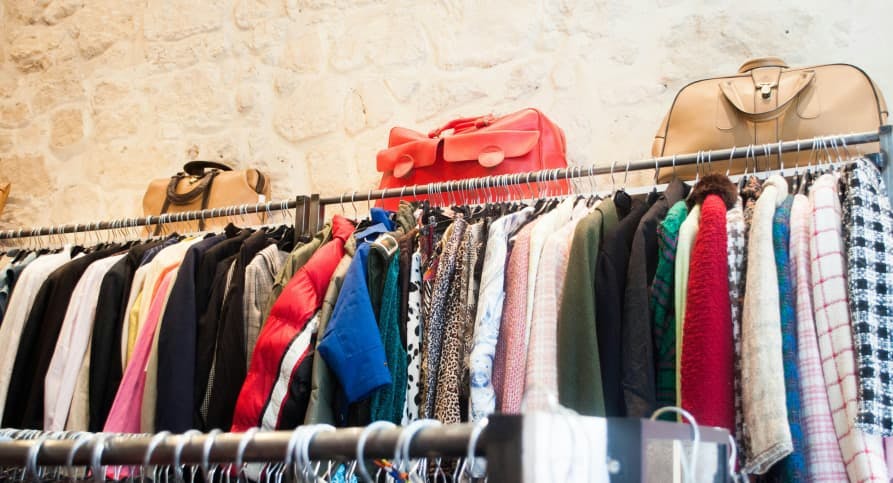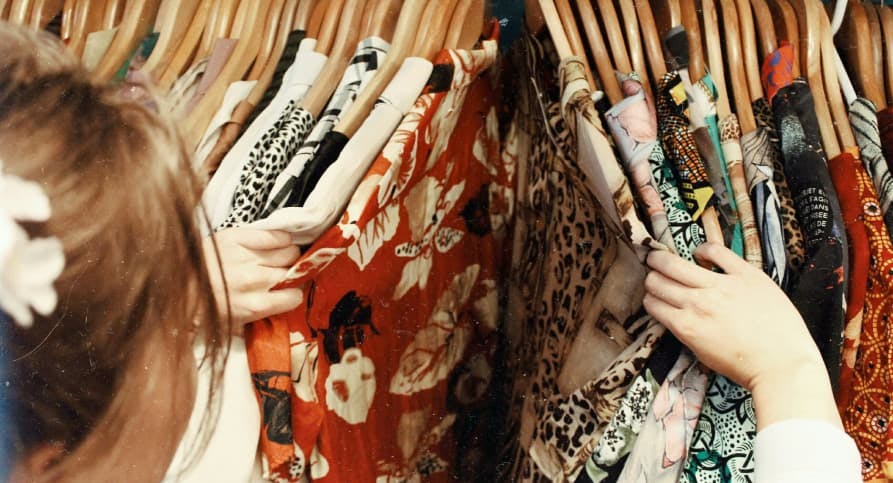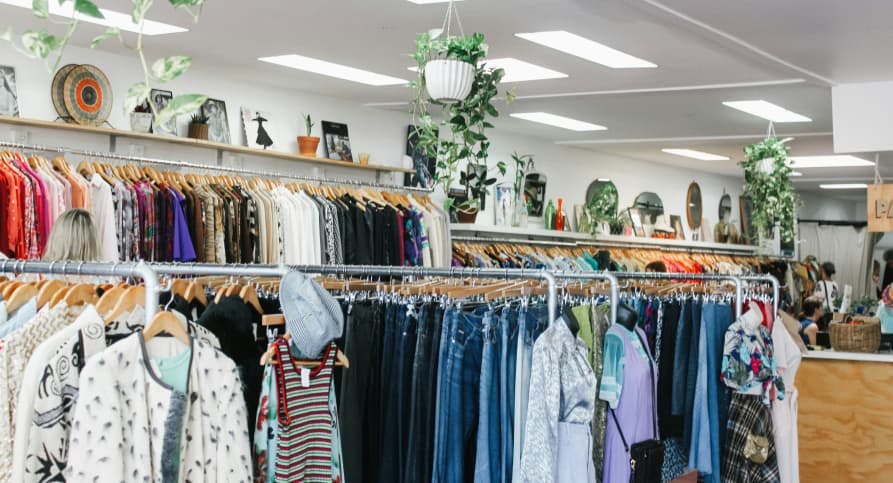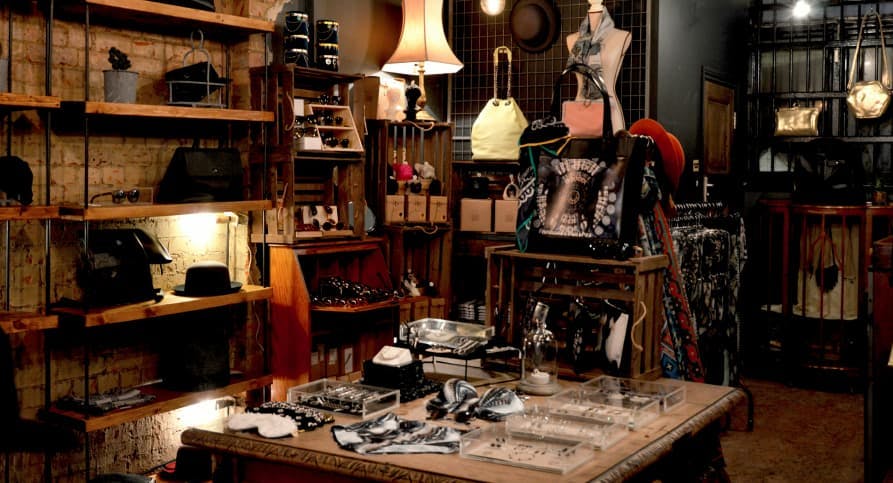ESG / CSR
Industries
Second Hand Site vs Vintage Boutique: What's the Best Choice?



Even though massive fashion events such as Paris Fashion Week continue to take place multiple times a year, and may not make use of the most sustainable materials or the importance of eco-friendly fashion – up to 38% of Vogue’s readers these days are interested in purchasing and wearing more environmentally friendly items.
This has inspired many people to leave their fast fashion shopping days behind them in exchange for thrift shopping or other more eco-friendly fashion stores.
However, those new to sustainable fashion may not know which is the better choice to help the effects of fighting climate change – a second hand site or a vintage boutique.
In this article, we’ll explain why sustainable fashion is important, what the difference between second hand stores and vintage boutiques are, which is the better eco-friendly fashion choice, and more.
What is sustainable fashion?
Sustainable fashion is the practice of buying, wearing, or making clothes that will help to reduce the environmental impact created by clothing without sacrificing style or functionality.
Sustainable fashion is more important than ever before for several reasons:
- It helps to reduce plastic pollution and overflowing landfills;
- Mitigates excess water pollution;
- Avoids the use of harmful chemicals, such as dyes or textiles, being used in fast fashion industries to mass produce garments;
- Accentuates the importance of ethical production and fair working rights for employees involved in the production of clothing;
- Allows for more biodegradable materials and future innovation.
Many companies have partnered with celebrities passionate about climate change to further spread the importance of sustainable fashion. One of these many examples includes Tommy Hilfiger’s partnership with Canadian singer-songwriter Shawn Mendes – which successfully recreated classic Hilfiger garments while making use of more sustainable materials.
👉 Examples of sustainable fashion include slow fashion, conscious fashion, ethical fashion, and circular fashion – where the latter will encourage people to recycle and upcycle their old garments.

What is a second hand clothing site?
A second hand clothing site, more commonly referred to as a thrift store, refers to a shop that will sell donated or used clothes, accessories, or other items at lower prices.
Here are a few reasons why thrift shopping has become so popular in recent years:
- Affordable Shopping – Second-hand clothing stores will often sell name-brand items for a fraction of the original price – which can allow those on a budget to shop in style without breaking the bank.
- Extends the Life-Cycle of Clothes – Second hand shopping allows for clothes to be used longer than intended and can help prevent them from ending up in the trash when it isn’t necessary. Even if the clothes have a few holes or tears, people are usually still happy to purchase worn items from a second hand store as it gives the piece “character”.
- Mitigates Excessive Production – The more people secondhand shop, the less demand companies will have to produce new garments. This means that thrift shopping can help to prevent the depletion of resources such as plastic, water, and various textiles being used to produce new pieces of clothing.
- One-of-a-Kind Items – For many, the highlight of thrift shopping is the opportunity to discover items not sold in popular chain stores. This allows people to curate a unique fashion sense while also helping the planet and their wallet.
- Supports Additional Programs – Many thrift stores or donation organizations, such as the Salvation Army Donation, work together with second-hand clothing stores to help support other charities or communities in need – such as those affected by natural disasters.
Second-hand clothing stores are bound to vary in the way they operate. For instance, some second-hand stores might operate depending on how many donations are received. Other thrift stores may accept more casual donations (think of walking into the store with a big box of old clothing), but may have stricter criteria – such as brand name, condition of the garment, and if it is in line with current fashion trends.
👉 Ultimately, second-hand clothing stores allow people to have both a sustainable and unique shopping experience while also helping to reduce the demand of production for new garments and find one-of-a-kind items that can’t be found elsewhere.

What is a vintage boutique?
A vintage boutique refers to a specialised store which will sell clothes, accessories, jewelry, and more from multiple decades ago. Oftentimes, the selection found in a vintage boutique is hand-picked to match the aesthetic and atmosphere of that specific store.
In addition to this, a vintage boutique is often much smaller than a thrift store – whereas a vintage boutique will often be small in order to personally accommodate potential customers.
Some characteristics of a vintage boutique include:
Here are some key characteristics of a vintage boutique:
- Specialised Curated Selection – Vintage boutiques, more so than thrift stores, will take pride in carefully selecting their inventory in order to appeal to a niche group of customers. This may include a focus on a specific time period or decorating the vintage store to fit the decade many of the pieces in the vintage boutique are from.
- More Accessories – More people are likely to donate a large bin of old clothes to a thrift store, but accessories and jewelry may prove more difficult to find. Luckily, at a vintage boutique – there is a heavy focus on accessories, jewelry, watches, shoes, hats, and more.
- Personalised & Time-Specific Experience – Going to a vintage boutique is a lot like taking a time machine, which many customers will find to be a unique experience on its own even if nothing is purchased. This is because in addition to selling clothes, jewelry, and accessories – some vintage boutiques may also offer home decor or furniture in line with the time period they specialise in – creating a unique and immersive experience for customers.
- High Quality – Even though pieces found in a vintage boutique are older, they are kept in pristine condition – meaning that the items will often need to be restored or repaired. This is something to keep in mind when deciding whether a second hand store or vintage boutique is the better choice for you.
- More Expensive – Some thrift stores may only charge you by the weight of your shopping bag – allowing you to buy multiple items for next to nothing. Vintage boutiques, on the other hand, are bound to be more expensive than a chain clothing store to be found at your local mall.
👉 Vintage stores are a great place for people to engage with a specific period of time – especially for those with an affinity for an era of history, appreciate detailed and intricate designs, and who hold the desire to collect rare items.

Which is better for the environment: a thrift store or vintage boutique?
Although both are better than fast fashion stores, a thrift store ultimately has the capacity to do more for the environment in the long-run than a vintage boutique.
Ultimately, a vintage store’s main priority is to sell antique items with a history to customers – even if the price tag is heavy. This is vastly different from the main goal of a thrift store, which is to resell old or donated garments to other people to prevent additional waste and support other beneficial organizations.
There are several reasons why a second hand clothing site is bound to make a bigger difference for the planet than a vintage boutique. For example, second hand clothing stores ensure that garments are being used to their full extent, whereas purchasing from a vintage boutique – while not mass produced, still presents the risk for the garment to be thrown away or not donated.
In addition to this, vintage boutiques need to make use of various resources to repair or restore items, and while this is still better than buying a new dress from H&M or Forever 21 – thrift stores skip this resource depleting step entirely.
👉 The choice between shopping at a vintage boutique or a thrift shop is up to personal preference, but when it comes to the environment – the mass amount of donated clothes in a thrift shop has a better opportunity to extend the life of more clothing than the small, curated selections presented at a vintage boutique do.

How else can we reduce my environmental impact through our fashion choices?
Besides shopping at thrift stores or vintage boutiques, there are lots of ways that you can reduce the environmental impact of your fashion choices – such as by taking your old garments to a tailor and finding new ways to use old items for other household chores.
Here are a few ideas to ensure you make the most of your clothes:
- Find a Local Tailor – Take old clothes to a tailor to size them up or down accordingly. You’d be surprised just how easily a garment can be adjusted.
- Learn Basic Sewing – Learning how to sew a simple stitch by hand can give you both the confidence and convenience to fix your own clothes – such as by sewing a patch on a pair of ripped jeans.
- Upcycle Old Pieces – Reuse old shirts as fabric or as a rag for cleaning and dusting.
What about Greenly?
If reading this article about the difference between choosing a second hand clothing store or a vintage boutique and which is better for the planet has made you interested in reducing your carbon emissions to further fight against climate change – Greenly can help you!
It can be challenging to make the necessary everyday choices needed to help tackle climate change, such as how to shop for clothes – but don’t worry, Greenly is here to help. Click here to schedule a demo to see how Greenly can help you find ways to improve energy efficiency and decrease the dependency on fossil fuels in your own company.
Greenly can help you make an environmental change for the better, starting with a carbon footprint assessment to know how much carbon emissions your company produces.




